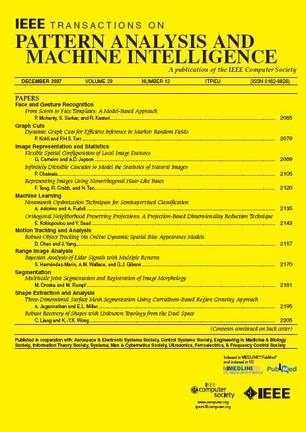Single Voter Spreading for Efficient Correspondence Grouping and 3D Registration.
IF 18.6
1区 计算机科学
Q1 COMPUTER SCIENCE, ARTIFICIAL INTELLIGENCE
IEEE Transactions on Pattern Analysis and Machine Intelligence
Pub Date : 2025-09-12
DOI:10.1109/tpami.2025.3609474
引用次数: 0
Abstract
Obtaining highly consistent correspondences between point clouds is crucial for computer vision tasks such as 3D registration and recognition. Due to nuisances such as limited overlap and noise, initial correspondences often contain a large number of outliers, imposing a great challenge to downstream tasks. In this paper, we present a novel single voter spreading (SVOS) method for efficient 3D correspondence grouping and 3D registration. Our core insight is to leverage low-order graph constraints only in a single voter spreading voting scheme to achieve comparable constrain-ability as complex constraints without searching them. First, a simple first-order graph is constructed for the initial correspondence set. Second, a two-stage voting method is proposed, including single voter voting and spread voters voting. Each voting stage involves both local and global voting via edge constraints only. This promises good selectivity while making the voting process time- and storage-efficient. Finally, top-scored correspondences are opted for robust transformation estimation. Experiments on U3M, 3DMatch/3DLoMatch, ETH, and KITTI-LC datasets verify that SVOS achieves new state-of-the-art correspondence grouping and registration performance, while being light-weight and robust to graph construction parameters. The code will be available at https://github.com/ZhaoZeng-pro/SVOS.高效通信分组和三维注册的单投票人扩展。
获得点云之间高度一致的对应关系对于三维配准和识别等计算机视觉任务至关重要。由于有限的重叠和噪声等干扰,初始对应通常包含大量的异常值,给下游任务带来了很大的挑战。在本文中,我们提出了一种新的单投票人传播(SVOS)方法,用于有效的三维通信分组和三维配准。我们的核心见解是仅在单个选民传播投票方案中利用低阶图约束,以获得与复杂约束相当的约束能力,而无需搜索它们。首先,对初始对应集构造一个简单的一阶图。其次,提出了单投票人投票和分散投票人投票的两阶段投票方法。每个投票阶段只通过边缘约束进行本地和全局投票。这保证了良好的选择性,同时使投票过程节省时间和存储效率。最后,选择得分最高的对应关系进行鲁棒变换估计。在U3M, 3DMatch/3DLoMatch, ETH和KITTI-LC数据集上的实验验证了SVOS实现了新的最先进的通信分组和配准性能,同时具有轻量级和对图构建参数的鲁棒性。代码可在https://github.com/ZhaoZeng-pro/SVOS上获得。
本文章由计算机程序翻译,如有差异,请以英文原文为准。
求助全文
约1分钟内获得全文
求助全文
来源期刊
CiteScore
28.40
自引率
3.00%
发文量
885
审稿时长
8.5 months
期刊介绍:
The IEEE Transactions on Pattern Analysis and Machine Intelligence publishes articles on all traditional areas of computer vision and image understanding, all traditional areas of pattern analysis and recognition, and selected areas of machine intelligence, with a particular emphasis on machine learning for pattern analysis. Areas such as techniques for visual search, document and handwriting analysis, medical image analysis, video and image sequence analysis, content-based retrieval of image and video, face and gesture recognition and relevant specialized hardware and/or software architectures are also covered.

 求助内容:
求助内容: 应助结果提醒方式:
应助结果提醒方式:


